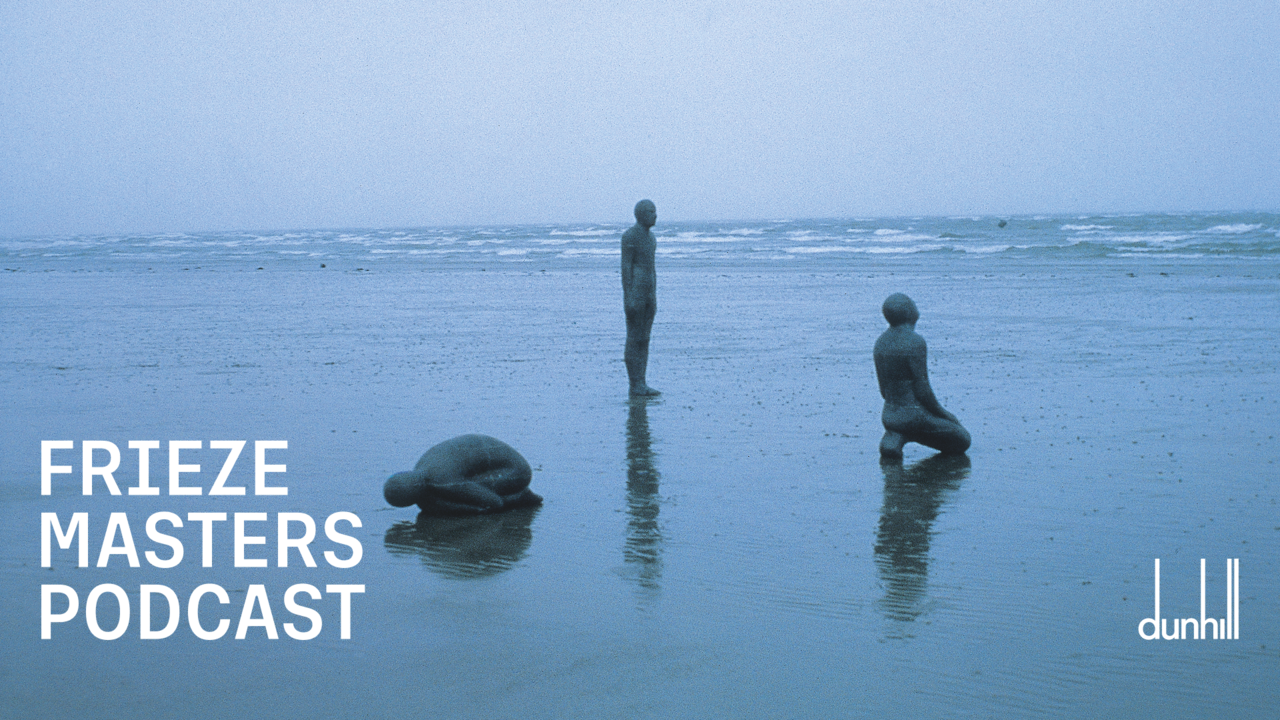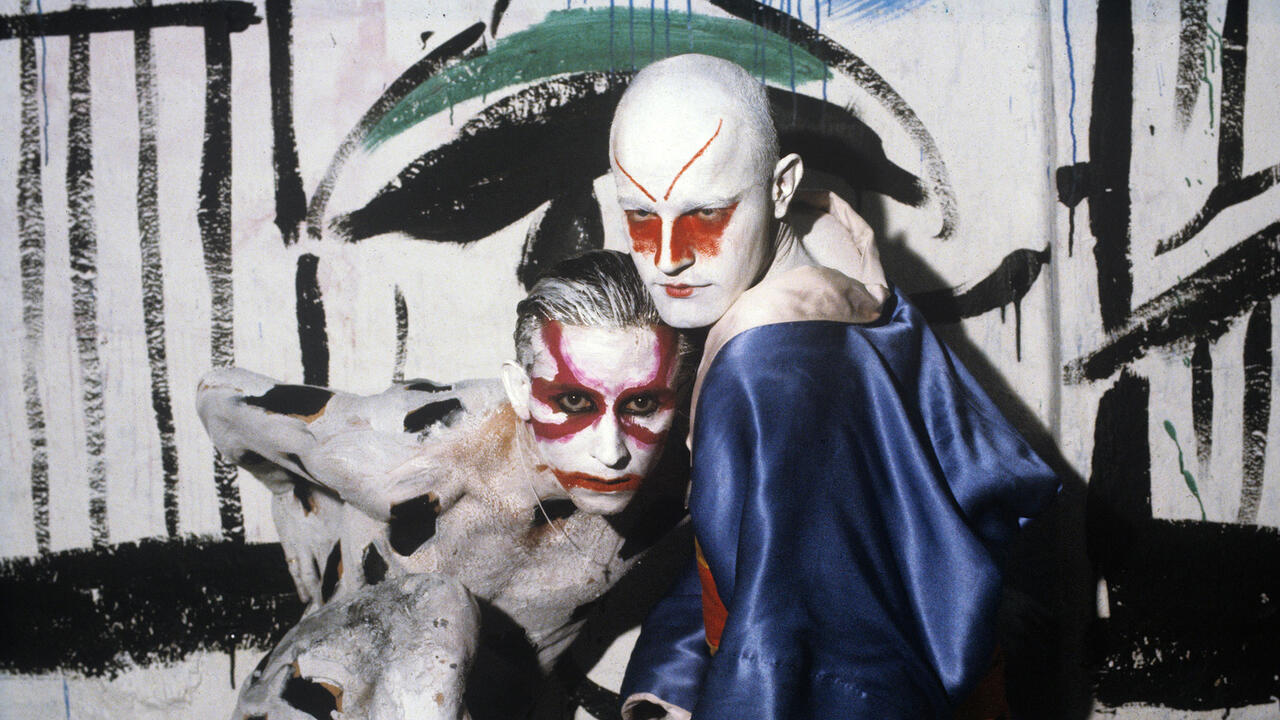Wiebke Siem
Johnen Galerie, Berlin
Johnen Galerie, Berlin

Ten black skeletal figures were hung from the ceiling in the main space of Johnen Galerie. Arranged in a semicircle, they faced one of the figures in front of the large row of windows – like a gang surrounding its leader or a chorus its conductor. At first glance, the anthropomorphic two-metre high mobiles seemed like felt-tip pen-sketched figures, flickering between graphic outlines and objects. On closer inspection, one could see that each of the hanging figures is pieced together out of old-fashioned household items, painted with black acrylic and polished. Their ‘feet’– made of potato mashers and shoe lasts – hover lifelessly just a few centimetres above the grey-painted wooden floorboards.
When Alexander Calder showed his hanging kinetic mobiles in the 1930s they operated as actors in a performance, responding to the air movements in the room made by viewers. But Siem’s referential, figurative mobiles stand still. This troupe of mobile-marionettes was suspended between lifelessness and animation, the viewer apprehensively anticipating a yet-to-come metamorphosis in the space. Perhaps the troupe would free itself from its strings like skeletons in a graveyard and begin buoyantly swaying in a danse macabre. Or perhaps they would revive like the dead in Ezekiel’s Old Testament vision or break into a rendition of James Weldon Johnson’s Dem Bones: ‘your toe bone connected to your foot bone, your foot bone connected to your heel bone …’ as the well-known spiritual goes.
Taking a different musical reference, each of Siem’s figures is named after a song or album by Sun Ra, known for his extravagant costumes, wild performances and a personal mythology that fused occult figures, black syncretistic imagery and Afrofuturist vocabulary. One of the figures, Strange Strings (2013), has a head made of a flower-like lampshade frame and a shoehorn that sticks out of it as if it were a long tongue or a bird’s beak recalling Max Ernst’s surrealist man-bird figures. Another, Daddy’s gonna tell you no lie (2012), has a chopping board for a head, hands made of wood spoons and clothes pegs for fingers. A round opening in a horizontally hung bamboo vase served as a Cyclopean orifice for The ninth Eye (2012), with the rest of its organs made from a string of wooden tennis-sized balls. Muck Muck and What’s That? (both 2012) sported big, almost obscene noses, sprouting out of a chopping board and a wooden bowl.
The black ‘faces’ of these figures convey cartoonish, exaggerated expressions formed by simple displacements and reordering of found everyday objects. They reference early surrealist sculpture and bricolage modes of processing found materials into symbolically and psychoanalytically loaded content. But they go even further back to the ‘Primitive’ tribal figures of indigenous cultures that served so crucially in early Modern art as a source of influence and object of projection – designated to regenerate Western culture as its pure unconscious.
Armoured with cooking, cleaning or dressing implements, Siem’s works address these early Modern fascinations with objects of totemism and fetishism that were ‘discovered’ through colonial trade in Africa (and later Oceania or America). However, Siem’s hot skillet mama, reminds us that these objects – which reached the studios of Pablo Picasso, Henri Matisse, Georges Braque and others via the ethnological exhibitions of that era and the flea markets of Montparnasse – were discharged of their the ritual, mythical status in the act of being exhibited.
Historically, while women – as with the ‘primitive’ and the ‘native’ – have been categorized and projected onto as the Other, products of craftsmanship and household tools have been judged according to their use function, possessing a lower status in comparison to objects of art. Siem’s installation hosted a conspiracy of domestic utensils against their designation: it charged the housewife’s universe of household utensils with a magical and violent tribal voodoo or totemic potential.
In a reversal of Freud’s idea of the uncanny as something repressed that is conjured within the familiar – where the space of the home is rendered unheimlich (uncanny) – here the ghostly figures come first, followed by the recognition of rearranged spoons and bowls. With hot skillet mama, Siem turned the gallery into a playground that allowed mechanisms of the unconscious to appear, using a visual language that was ‘female’, macabre and decorative all at once.















